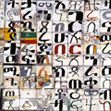


February 22, 2021
Cache for cachet, an apostrophe without an S to form a possessive and other issues from the week in editing
TOPICS: CACHE, CACHET, GRAMMAR, SINGULAR AUSPICE, WELLBEING, whomever
A week in the life of a copy editor wouldn’t make for a good movie — a lot of sitting, staring and tapping at the comma key on a computer. But for language nerds and people who’d like to improve their grammar skills, an ultra-condensed week in the life of a copy editor could make for an entertaining way to spend five minutes. So here are a few of the more interesting language issues this copy editor came across last week.
“Living at this address carries a certain cache.” Sentences like this justify my paycheck. As a copy editor, I specialize in knowing about commonly confused words like “cache” and “cachet.” For whatever reason, it seems very few non-editors know that “cache” is pronounced “cash” and if you want the two-syllable word that means prestige, it gets a T on the end.
“Yesterday, Popov’ mother drove her to the store.” Possessives can be hard. Possessives of words that end in S are harder. But possessives of words that end in Ch, X or Z shouldn’t be. And that goes double for words that end in V. There are no special rules for forming possessives of words that in end in one of these letters. Just add an apostrophe and an S: Popov’s mother, just like Smith’s mother or Lurch’s mother or Chavez’s mother.
I also encountered:
Wellbeing
Where Everyday Is the Weekend
Under the auspice of the charitable foundation
Thank you to whomever sent me these beautiful flowers
You can read about how I handled them all in my recent column here.
Click player above to listen to the podcast
 DOWNLOAD MP3
DOWNLOAD MP3 PODCAST
PODCAST- SHARE



February 15, 2021
Why you should choose till over 'til
TOPICS: COPY EDITING, GRAMMAR, TILL TIL UNTIL
I don’t see the contraction ’til much anymore. I used to see it a lot, but I suspect that ever-more-advance spell-checkers on our computers, phones and social media platforms have learned to flag or correct ’til.
Don’t see a problem with ’til? Technically, there isn’t one. In general usage, ’til is not an error. But in professionally edited writing and other formal situations, the correct single-syllable alternative to “until” has no apostrophe and takes two Ls: till.
Here’s the widely influential Associated Press Stylebook: “till. Or until. But not ’til.”
And here’s the equally influential Chicago Manual of Style: “till. This is a perfectly good preposition and conjunction (open till 10 p.m.). It is not a contraction of until and should not be written ’til.”
That bit about contractions is key. One might naturally assume that someone is just using a shortened form of “until” when he says “till.” But till doesn’t come from until at all. Here, in my recent column, is the full story.
Click player above to listen to the podcast
 DOWNLOAD MP3
DOWNLOAD MP3 PODCAST
PODCAST- SHARE



February 8, 2021
Why passive voice is great for dishonest writers — and everyone else, too
TOPICS: COPY EDITING, GRAMMAR, PASSIVE VOICE
Does the passive voice lend itself to biased, manipulative writing? A reader named Richard wanted to know after witnessing a discussion about a news article.
“Someone criticized an article on politics, implying it was slanted, saying, ‘It was full of passive-voice statements,’” he said. “I have a rudimentary understanding of the passive voice and I don’t understand what he meant.”
I do, all too well. So I can answer Richard’s question with an emphatic “yes.” Passive voice is a fantastic tool for sneaks and manipulators to slither around the truth. More often, though, it allows bad writers to write badly. And just as often, it’s used by good writers to write well.
To spot the difference, you have to know what passive voice is. Let’s start with a quiz. Is this sentence in the passive or active voice? “Bob had been planning on doing some serious thinking about becoming more accepting and being more forgiving.” Here's the answer.
Click player above to listen to the podcast
 DOWNLOAD MP3
DOWNLOAD MP3 PODCAST
PODCAST- SHARE



February 1, 2021
Harsh writing advice
TOPICS: COPY EDITING, GRAMMAR, HARSH WRITING ADVICE, SENTENCE WRITING
"Harsh writing advice" was trending on Twitter the other day, with users offering their thoughts on the craft — everything from the tried-and-true "just write, dammit" mantra to tips on how to create characters. My contributions, naturally, had to do with grammar. And they were based on years of experience reading and fixing bad writing.
- Tangible subjects, action-oriented verbs whenever possible. Enough of this "Those who are known to frequent restaurants are considered risk-takers" bullshit. "Diners take risks."
- Any adverb that does not add new information makes your sentence weaker, not stronger. He was violently gunned down in the street —> He was gunned down in the street.
- Stop with the damn danglers, already.
The bottom line: If your ideas are great and your characters are great and your insights are great and your action is great and your information is great but you can't communicate them well, you're not writing well. Scrutinize each sentence to make sure it's as clear and efficient as possible.
Click player above to listen to the podcast
 DOWNLOAD MP3
DOWNLOAD MP3 PODCAST
PODCAST- SHARE



January 25, 2021
There's a lot of students or there are a lot of students?
TOPICS: COPY EDITING, GRAMMAR, THERE ARE, THERE IS, THERE'SWhat do you think of the sentence “There’s multiple opportunities for youngsters”? How about “There’s many people who wish to travel”? How about “There’s a lot of students who wish to travel”?
If you’re like most English speakers, you’re fine with it. Chances are, you use these forms yourself. Nothing wrong with that. But if you’re like me or reader Elaine in Long Beach, you’re not a fan. And there’s nothing wrong with that, either.
Don’t see the issue? Compare the above sentences to these slightly modified versions: “There are multiple opportunities for youngsters.” “There are many people who wish to travel.” “There are a lot of students who wish to travel.”
In our first examples, the singular verb “is” pairs with a plural subject — “opportunities,” “people” or “students” — creating a subject-verb agreement error.
Most subject-verb agreement problems are easy to avoid. You’d never say “Opportunities is plentiful” or “Many people is wishing to travel.” But start a sentence with “there’s” and agreement gets more complicated. Here's what you need to know.
Click player above to listen to the podcast
 DOWNLOAD MP3
DOWNLOAD MP3 PODCAST
PODCAST- SHARE



January 18, 2021
Of mannequins and manikins
TOPICS: COPY EDITING, GRAMMAR, MANIKIN MANNEQUIN, WORD CHOICE
Recently I was reading an article about a study on the efficacy of cloth masks for COVID-19 protection. Researchers tested masks by putting them on mannequins, the article reported. Except the illustration that accompanied the article didn’t call them mannequins. In the images, the dummies were referred to multiple times as “manikins.”
I stifled an “aha!” and basked in a moment of smug satisfaction. Then I reined in my typo-slayer triumph. As I’ve learned over the years, it’s always a bad idea to get cocky about a language issue without looking it up first. So I looked up “manikin.”
Merriam-Webster’s set me straight. “Manikin” is not a spelling error. It’s a synonym of “mannequin.” Less frequently, so is “mannikin.”
Often, variant spellings like these result from people accidentally misspelling a word over and over for years. But that may not be the case here. Here's what I learned about the origins of "manikin" and "mannequin" and why both were correct in the article.
Click player above to listen to the podcast
 DOWNLOAD MP3
DOWNLOAD MP3 PODCAST
PODCAST- SHARE



January 11, 2021
John Le Carre's adverb advice missed the mark
TOPICS: ADVERBS, GRAMMAR, John Le Carre, MANNER ADVERBS, WRITING
David John Moore Cornwell, better known by his pen name John Le Carre, passed away in December. The author of “Tinker, Tailor, Soldier, Spy” and “The Spy Who Came In From the Cold” leaves behind a legacy of treasures not just for readers but for any writer who would learn from a master. Take, for example, this expert bit of writing wisdom attributed to Le Carre: “I don’t use adjectives if I can possibly get away with it. I don’t use adverbs. I try to make the verb do the work.”
As someone who spends her days fixing bad writing, I can tell you there’s gold in those words, especially the part about adverbs. Novice writers use adverbs hoping they’ll strengthen their writing, but their efforts usually boomerang. For example, which has greater impact? “The spy brutally and cruelly totally gunned down the traitor” or “The spy gunned down the traitor”?
Adverbs often weaken the information you’re trying to strengthen. So whenever you notice one in your writing, try taking it out. If the passage is better, leave it out. If not, put it back in. Make this a habit and you’ll become a better writer. Guaranteed.
But despite Le Carre’s obvious wisdom, there’s a problem with his advice: Le Carre, it seems, didn’t know what adverbs are. Turns out he used them all the time. Here's my column on the point that Le Carre missed about adverbs.
Click player above to listen to the podcast
 DOWNLOAD MP3
DOWNLOAD MP3 PODCAST
PODCAST- SHARE



January 4, 2021
When to use 'healthful' in place of 'healthy'
TOPICS: COPY EDITING, GRAMMAR, HEALTHFUL, HEALTHY
Traditionalists have long argued that “healthful” means “promoting good health” while “healthy” means “in good health.” So a person can be healthy but a diet or lifestyle cannot. It must be healthful.
If that was ever true, it’s not now.
Webster’s New World College Dictionary: healthy. adj. 3. healthful
Merriam-Webster’s online. healthy. adj. 3. conducive to health
I think most people would say that “healthy diet” is more popular and more natural-sounding than “healthful diet.” So why do some publications still use “healthful” and, just as interestingly, why do I often change “healthy” to “healthful” when I’m copy editing marketing pieces?
It’s because, in language, you have to pick your battles. And, when you do so, you have to take into account your reader and the context in which you’re writing. Readers who believe “healthful” can’t mean “healthy” notice what they believe to be an error. And errors, real or perceived, are distracting. So you may want to make the safe choice by opting for “healthful.”
Context counts. If I were editing articles for a well-respected major publication, I would choose “healthy diet” instead of “healthful diet.” But much of my editing work is for smaller, less respected, sometimes advertorial publications. Readers might assume, rightly so, that editors and writers of smaller publications are less knowledgeable than wordsmiths working for the big boys. So they might be quicker to assume that a “healthy diet” in one of my publications is the result of ignorance and not a choice.
That's why, often, I cave in to the misinformed sticklers and change all "healthy" to "healthful."
Click player above to listen to the podcast
 DOWNLOAD MP3
DOWNLOAD MP3 PODCAST
PODCAST- SHARE



December 28, 2020
How to Write Book and Movie Titles
TOPICS: BOOK TITLES, COPY EDITING, GRAMMAR, HOW TO WRITE, ITALICS, MOVIE TITLES, quotation marks
Do book and movie titles go in italics or quotation marks? There’s no right or wrong answer. It’s just a matter of style. Then I pause to watch their faces light up with joy and relief. But that’s not what happens. The inquisitive expressions don’t fade because they didn't want to hear “Don’t sweat it.” They wanted more specific instruction. So here’s what I tell them.
 News style harkens back to the days when printing presses were like dinosaurs: huge, clunky, and destined for extinction. Most couldn’t make italics. So newspapers put book and movie titles into quotation marks.
News style harkens back to the days when printing presses were like dinosaurs: huge, clunky, and destined for extinction. Most couldn’t make italics. So newspapers put book and movie titles into quotation marks.
<<The actors in “Star Wars” went on to have varying degrees of success.>>
<<Johnny read “War and Peace” in school.>>
Magazine titles they just capitalize, skipping the quote marks.
<<Jane writes for the Time and Newsweek.>>
Book publishers, which have a greater need to print things like tables and charts and excerpts, have had a greater need for flexible printing options, including italics. So, because they can, they skip the quotation marks and just italicize those titles instead.
<<We read The Road.>>
Book publishers also italicize magazine titles, but put article titles and chapter titles in quotation marks.
If, like the people in those grammar seminars, you need a thorough how-to, just consult a style guide. Or you could just pick one way, saying using quotation marks, and stick with it. Either way, there’s no need to worry you're doing it wrong.
Click player above to listen to the podcast
 DOWNLOAD MP3
DOWNLOAD MP3 PODCAST
PODCAST- SHARE



December 21, 2020
You or a loved one 'has' coverage or 'have' coverage?
TOPICS: conjunctions, COPY EDITING, GRAMMAR, OR, SUBJECT VERB AGREEMENT
Even though I've been editing a long time, I regularly find myself stumped by some language or editing conundrum whose answer I used to know.
Here’s an example: “How to know if you or a loved one have coverage.” When I came across a sentence like this recently, I didn’t notice the verb. Nor did I notice the verb in a nearly identical phrase that appeared later: “How to know if you or a loved one has coverage.” Eventually I saw they were different. “Have,” in the first example, is conjugated for the second-person singular subject: “you have.” In the second example, “has” is conjugated for the third-person singular: “a loved one has. ”
I’ve tackled these “or” situations hundreds of times over the years. But this time I just couldn’t remember which one was correct. So I had to brush up on the rules.
As I relearned, the answer isn’t simple. “Or” is unique among conjunctions because the way it joins nouns has a different meaning than the way its fellow conjunction “and” joins nouns. When a compound subject contains “and,” it’s easy to make the verb match: You and a loved one have coverage. By nature, “and” makes singular things plural: Ned is. Nancy is. Ned and Nancy are. It’s obvious you need the plural verb.
Here's the full story in my recent column.
Click player above to listen to the podcast
 DOWNLOAD MP3
DOWNLOAD MP3 PODCAST
PODCAST- SHARE







